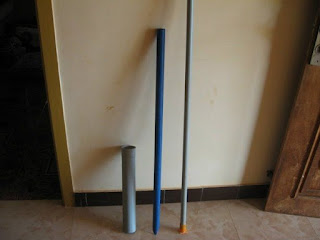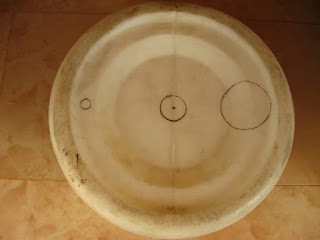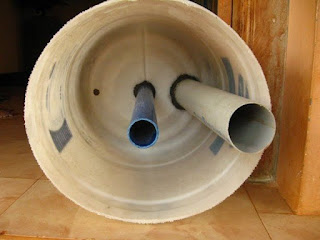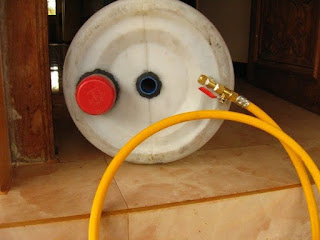SOLID WASTE MANAGEMENT IN VARIOUS INDIAN CITIES .TAKEN FROM DOWN TO EARTH MAGAZINE (CSE)
You can visit the original source the read the full article.
Decentralised
treatment options introduced in new rules.
The earlier rules relied on costly centralised facilities for treating and disposing municipal wastes while approximately 50 per cent of it can be easily turned into compost at the local level. Thus, the draft rules have made the much-needed provision for providing incentives to decentralised waste treatment facilities.
The earlier rules relied on costly centralised facilities for treating and disposing municipal wastes while approximately 50 per cent of it can be easily turned into compost at the local level. Thus, the draft rules have made the much-needed provision for providing incentives to decentralised waste treatment facilities.
Dear All,
First of all, I would like to ofeer Thanks for
incorporating few new aspects like involvement of Informal Sectors (especially
the Scrap Dealers) and also emphasising the Decentralised Composting and the
Collection of Users' Charge.
However, I would like to know the scopes for the following too ....
(a) Adequate provisions with added importance on the Health Concern fo the Waste Pickers / Handlers, be it in case of House to House Collection of Segregated Solid Wastes or the Decentralised Composting or waste trasformation in the Informal Sectors like Scrap Dealers.
(b) Decentralisaion of all others aspects like Source Management, Collection, Segragation, Waste Transformation, M&E etc. apart from that in Composting.
(c) Emphasising the Labour intensive Approach for the decentralised activities, alongwith demotivating the highly mechanised process.
(d) Full stop for the unsustained Waste to Energy Approaches.
(c) Strict efforts for Monitoring and Evaluation
Proper redress for the abovesiad issues may eventually make the whole Solid Waste Management Approach more meaningful and result oriented.
Hoping for the Best and all success for "Near Zero" to "Zero Waste Plan" under each Municipalities.
Thanks and Regards.
Nripendra Kumar Sarma
Guwahati, Assam, India
However, I would like to know the scopes for the following too ....
(a) Adequate provisions with added importance on the Health Concern fo the Waste Pickers / Handlers, be it in case of House to House Collection of Segregated Solid Wastes or the Decentralised Composting or waste trasformation in the Informal Sectors like Scrap Dealers.
(b) Decentralisaion of all others aspects like Source Management, Collection, Segragation, Waste Transformation, M&E etc. apart from that in Composting.
(c) Emphasising the Labour intensive Approach for the decentralised activities, alongwith demotivating the highly mechanised process.
(d) Full stop for the unsustained Waste to Energy Approaches.
(c) Strict efforts for Monitoring and Evaluation
Proper redress for the abovesiad issues may eventually make the whole Solid Waste Management Approach more meaningful and result oriented.
Hoping for the Best and all success for "Near Zero" to "Zero Waste Plan" under each Municipalities.
Thanks and Regards.
Nripendra Kumar Sarma
Guwahati, Assam, India
Decentralised integrated solid waste, waste
water and solar energy project at New Motibagh, New Delhi
Waste
Water Management: About 70% of the 8 lakh litres of water supplied to the
residents, that is, 5.6 lakh litres of waste water generated is treated in a
decentralized waste water treatment plant within the campus using the Moving
Bed Bio-reactor (MBBR) technology. There is a net savings of Rs.5 lakhs per
annum due to direct and indirect savings from a decentralized Waste Water
Treatment plant (WWTP) in the campus whose running cost is Rs.55.55 lakhs as
opposed to the centralized sewerage system costing Rs.60.62 lakhs.
The
energy savings from 300 solar street lights at the GPRA
complex, covering internal roads, common areas, parking lots and bunglows, help
in saving Rs.32.28 lakhs per annum. Along with solar water heaters, the savings
on electricity is close to Rs.35 lakhs a year.
Therefore, a decentralised integrated solid waste, waste water and energy project for about 1000 households can achieve clean and green surroundings and financial savings to the tune of Rs.40-50 lakhs per annum
Therefore, a decentralised integrated solid waste, waste water and energy project for about 1000 households can achieve clean and green surroundings and financial savings to the tune of Rs.40-50 lakhs per annum
Garbage to gold at mumbai
Though Gowariker and his colleagues are confident of the technology, they caution that refuse pelletisation is not the only or best way to deal with the growing urban garbage problem. Gowariker points out, "A product mix of compost and fuel pellets may be more appropriate, depending on the financial situation and the demand."
Delhi’s solid waste: a systemic failure
What can Delhi do?
We need hybrid solutions. We need a landfill, but only
for rejects and inerts. We need waste to energy, but then such plants should
ensure that they run on segregated waste only. With over 50 per cent
biodegradable waste, there is high potential to compost or generate biogas out
of the segregated wet waste. And all this cannot work, unless we segregate at
source. With over thousands of crores being spent on collection and
transportation, time has come to think out of the box. We can learn from our
neighbours and cities across India that are doing commendable work on waste
management.
Look at the Alleypey model, where residents have taken
it upon themselves to segregate and treat waste at source. It is the best model
in the country on decentralised waste management. We can even look at Panjim;
the municipal corporation not only ensures segregation at source, but also
segregates dry waste into 30 different categories. And then there is Mysuru,
Suryapet, Bobbili and a lot of other cities that are doing commendable work.
They have adopted local solutions, not global to become zero-waste cities. The
CSE has documented cities that are doing commendable work on waste
management.
Government notifies new solid waste
management rules
Segregation
at source should therefore be at the heart of municipalities’ solid waste
management system. The only city that has truly adopted segregation is Panaji.
Municipal officials have ensured a citywide system that is designed to collect
household waste on different days for different waste streams. This ensures separation.
It is combined with penalties for non-segregated waste and has promoted
colony-level processing as well. Most importantly, for the bulk of commercial
establishments such as hotels it has a bag-marking system so that any
non-compliance can be caught and fined.
In Kerala’s Alappuzha segregation happens differently. Here the municipality does not collect waste because it has no place to take it to for disposal. The city’s only landfill has been sealed by villagers who live in its vicinity. This withdrawal of the municipality from waste management has meant that the people have to manage their waste, or be drowned in it. They segregate and compost what they can. The compost is used for growing vegetables and plants in their homesteads. The problem is how to handle all the non-biodegradable waste—paper, plastic, aluminum tins, etc. This is where the government has stepped in. It promotes collection through the already well-organised informal waste-recycling sector. The municipality has ended up saving a huge capital cost it would have otherwise incurred for collection and transportation.
In Kerala’s Alappuzha segregation happens differently. Here the municipality does not collect waste because it has no place to take it to for disposal. The city’s only landfill has been sealed by villagers who live in its vicinity. This withdrawal of the municipality from waste management has meant that the people have to manage their waste, or be drowned in it. They segregate and compost what they can. The compost is used for growing vegetables and plants in their homesteads. The problem is how to handle all the non-biodegradable waste—paper, plastic, aluminum tins, etc. This is where the government has stepped in. It promotes collection through the already well-organised informal waste-recycling sector. The municipality has ended up saving a huge capital cost it would have otherwise incurred for collection and transportation.















